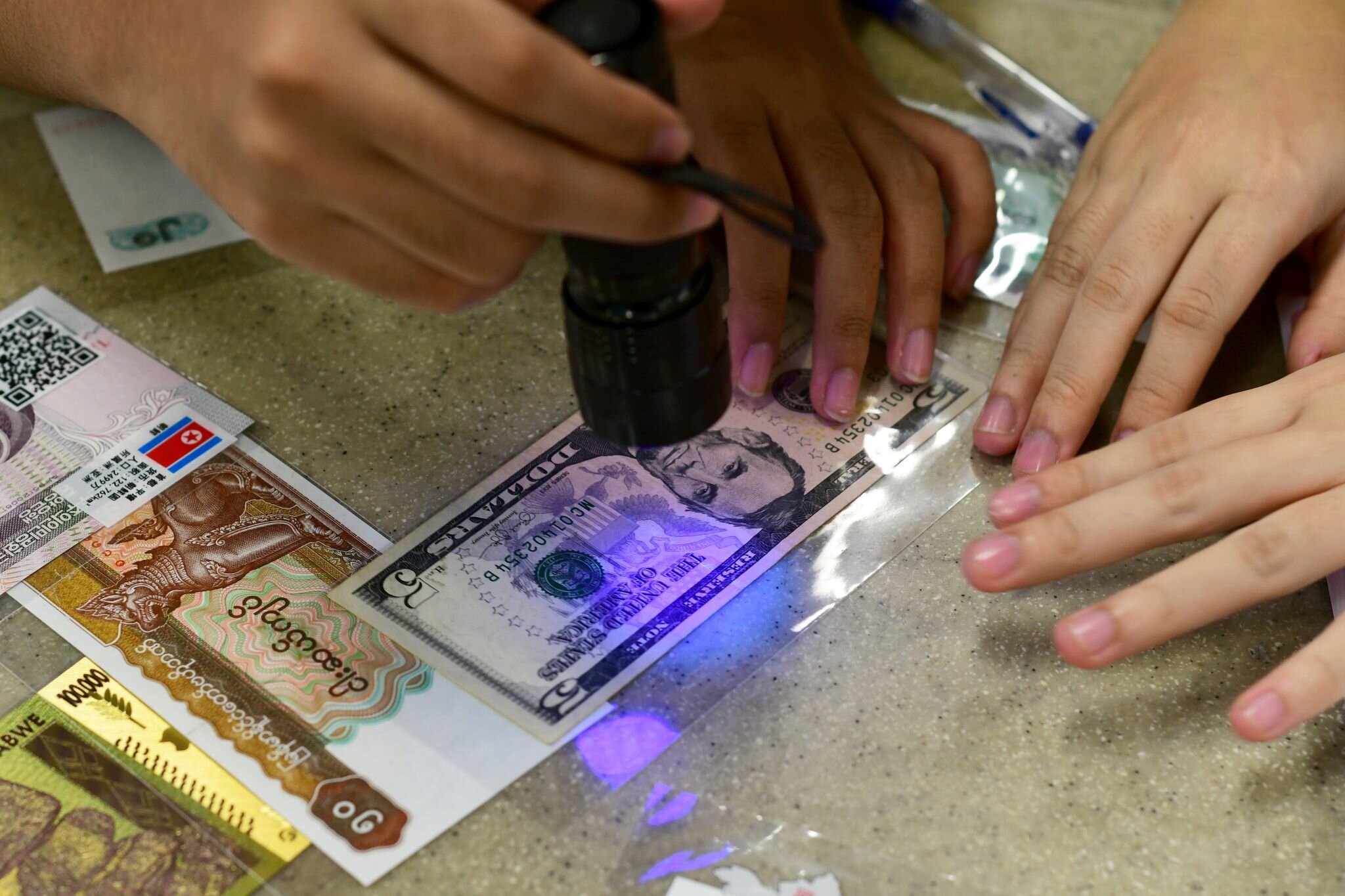One of the modules I teach my students covers lessons on Forgery and Financial Crime.
One of the activities involves my students examining currency notes from different countries around the world, as well as bank cheques.
They perform the examinations with UV lights and a digital microscope. Of course, I show them what safety features to look out for before they go at it.
Here’s the thing:
I’ve had teachers from the schools I teach at expressing concern over the fact that I’m “distributing money” and worrying that I won’t get it back.
I tell them that I’ve done this for years and I’ve never lost a single currency note or any apparatus used for this activity.
All I do at the start of the activity is tell my students matter-of-factly that I want my currency notes and bank cheques back at the end of the session.
I don’t mention this again until it’s time to return everything.
There have been multiple cases of students trying to raise a reaction in me by playfully threatening to walk off with the currency notes. I simply smile (now quite hard to see, because I’m wearing a mask) and tell them that, when they’re done, they can put it back on my table.
The point is this: Students will test boundaries and they will test you. They often do this in order to feel you out - to see whether they can look up to you, treat you as a friend, or to see if they should avoid you.
It is up to you as a teacher to set those boundaries and stick to them. It is also up to you to express confidence in your students and their moral values - that they will do the right thing, given the opportunity.
Students don’t need to be nagged or coddled. They are fully capable of doing the right thing at the right time in the right way. Give them the space to do so.
To help your confidence, I haven’t lost a single currency note.
Systems are Designed. Their Flaws Can Also be Designed Away.
It's easy to understand why people in large systems do the things they do.
Because the systems are composed of so many working parts, a tiny error somewhere can eventually lead to a cascade of catastrophe.
Or at least that's what the fear is.
As a result, most of the people working within these systems are terrified that they are going to get punished for causing a malfunction, so they opt for a "better safe than sorry", "have all my bases covered" approach to everything.
This results in blanket policies, reactive strategies, and a general unwillingness to rock the boat, making changes only if absolutely necessary and only after mind-numbingly long periods of time.
Bureaucracy, red tape, infuriatingly inflexible gatekeepers, we've all met them.
And hate them.
And yet, they aren't there by accident. They are there by design.
Which means that they can also be designed away.
Hence the immense importance of thought leadership, safe spaces, and granting autonomy.
Why I Grant Autonomy to My Students, Part Three
[Granting Autonomy, Part Three]
I’m typically a hands-off kind of person. Maybe that’s why I find such appeal in autonomy and freedom of expression.
However, I’ve learned that not everyone is comfortable with so much space. Some of my students need structure and others need assurance and validation.
This makes it my job to be around for them when they feel uncertain or lost.
I’ve had students constantly asking if what they are doing is correct.
After a few times of me telling them, “there is no wrong answer to this”, and there really isn’t because their activities (at least the ones I design) are open-ended and exploratory, they start to get it and start tentatively trying things out on their own.
It may be tempting to skip the reassurances and do the experiment steps for them, but this doesn’t help anyone to learn, least of all me.
Take that time and spend that energy to be present for your students. It’ll pay off in spades, even if you don’t get to see it immediately.
Why I Grant Autonomy to My Students, Part Two
[Granting Autonomy, Part Two)
In my classroom, just because I grant autonomy, it doesn’t mean that it’s a free-for-all.
Guidelines still have to be followed.
For example, when I allow my learners to name their groups or their projects, the only guideline I lay down is: “As long as you can repeat it to your mother and not get into trouble, you can use it”.
For presentations, I allow them to do it in any style they want, as long as it won’t result in injury or distress.
The point I try to get across to them is that they have the freedom to express themselves, but that freedom cannot and should not result in harm to others or themselves.

